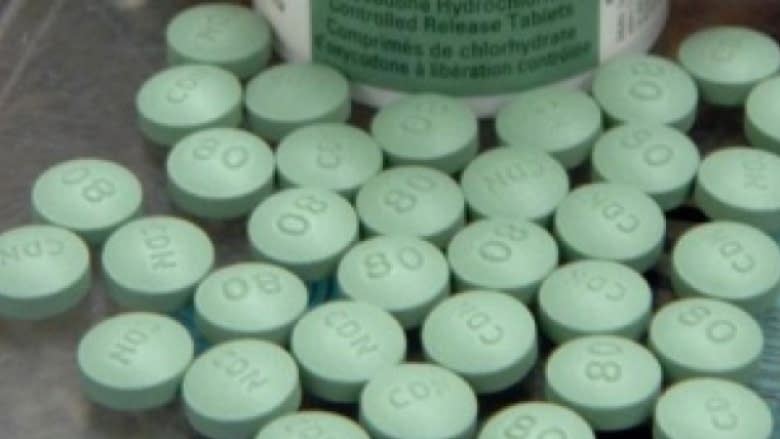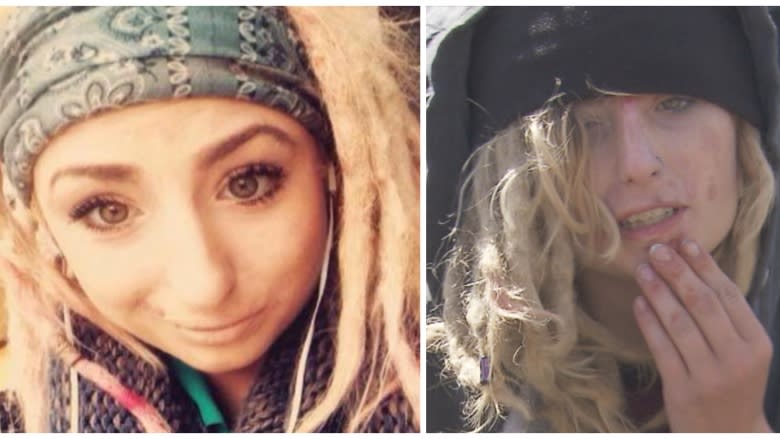Number of drug treatment beds for youth down 25% despite fentanyl crisis
CBC News has learned the number of substance abuse treatment beds for youth, aged 19 years and under, has plunged in B.C., even as young people continue to die in record numbers from fentanyl overdoses.
The decline in beds seems to fly in the face of an election promise to create 500 new addiction treatment spaces in B.C. by 2017, made three-and-a-half years ago by Premier Christy Clark.
Instead, a freedom of information request from the NDP obtained by CBC News shows the current number of "youth substance use beds" across the province stands at just 89 — a 25 per cent drop from a peak of 118 beds in 2012-2013.
The numbers come directly from B.C.'s Ministry of Health.
The beds are needed by youth and teenagers seeking to fight addiction. The facilities involved are publicly funded but can often have long waiting lists stretching for weeks, if not months.
Biggest declines in hard hit areas
The worst declines in substance abuse treatment beds for young people have occurred in the areas with the greatest number of overdose deaths in the province — the Vancouver Coastal Health and Fraser Health regions of the Lower Mainland.
In the Vancouver Coastal Health region, beds have dropped from a high of 57 in 2013-2014 to 36 in 2015-2016, a 37 percent decline.
In the area served by the Fraser Health Authority, the number of beds has plunged from 22 in 2013-2014 to just 10 in 2015-2016, a drop of 54 percent.
'This is shocking'
The NDP, which requested the FOI, says it was surprised by the results.
"This is shocking," said MLA Sue Hammell, the party's health critic.
"I would think to lose that number of beds at this point in time when we are clearly in a crisis is just not good enough. I think the province needs to address these deficiencies."
The mother of one fentanyl overdose victim agrees.
"It's inexcusable," said Michelle Jansen. "The death toll has been rising. The drug crisis has been increasing, and yet the number of treatment beds has steadily declined."
"The government hasn't fulfilled any of their promises to create and open new beds to address the issue."
Her son, 20-year-old Brandon Jansen, died in early March. In August, her youngest son's girlfriend, 16-year-old Gwynevere Staddon, died from a fentanyl overdose in a Port Moody Starbucks.
"Basically, there are no publicly-funded beds without waiting lists — four to six month waiting lists — unless you want to privately pay, which is, in essence, what I had to do and spend over $200,000 in private treatment beds, just to be able to get my son help and the treatment that he required."
Jansen's son died at a private treatment facility.
'It's a travesty'
Young addicts have told CBC News they often can't hang on for treatment because of the shortage of beds.
"They expect you to stay clean on your own for three to eight months while you're on a waiting list to get into a treatment centre," said 22-year-old Kati Mather earlier this month.
"How is that possible when you're an addict? You call every day. I did it for three months — then I relapsed."
A recent report on the fentanyl crisis by the B.C. Coroners Service showed fentanyl-related deaths for all ages in the province dipped in July but could still hit a record breaking 700 to 800 deaths by the end of the year. By July, there had been 264 fentanyl-related deaths.
In an interview with CBC News on Sept. 6, Premier Clark insisted the province was making progress on her 2012 election promise to create 500 more beds, though she noted, "that progress is never going to be enough for someone who has lost a loved one."
At the time, B.C.'s Ministry of Health also said the government was "committed to opening 500 substance abuse beds and are on track to meet our target in 2017."
But the numbers show the opposite is happening — at least when it comes to treatment beds for young people trying to fight addiction.
B.C. Health Ministry responds
In a statement to the CBC, B.C.'s Ministry of Health said, "it's important to note that mental health and substance abuse services can often be offered simultaneously, meaning some of the beds categorized as mental health beds also offer substance abuse treatment."
By the ministry's own numbers, contained in the FOI, there have been "zero" youth mental health beds in the Vancouver Coastal Health district since 2011 and 10, as of 2015/2016, in the Fraser Health district — less than half the peak of 22 youth mental health beds there were in 2013/2014.
The ministry also says the drop in numbers "can be attributed to the closure of the Crossing at Keremeos because of operator issues. In 2017, the Crossing will reopen to further support young people grappling with substance abuse, with a 22-bed youth residential treatment program."
The Keremeos facility treated addicted youth from the Lower Mainland.
But the ministry downplays the importance of treatment beds for youth, quoting Dr. Perry Kendall, the province's chief medical health officer, in a September 22 interview with the CBC earlier this month.
"I personally don't think that beds are the answer," Kendall told the Early Edition's Rick Cluff.
"Focusing on beds is a natural thing for people to do, but you need to have an intake system. You need to be able to provide withdrawal management for people who need it or substitution treatment for people who need it. That doesn't have to be done in a hospital or a residential care facility unless the person doesn't have a safe place to be."
Michelle Jansen doesn't buy that — and wants the province to boost the number of beds and cut the waiting lists.
"The government needs to act with urgency. They need to provide immediate funding. They need to open up beds."
"When we're talking about a fentanyl addiction, it's a death sentence. It's not just hoping to wait four to six months, because most people won't live that long."




